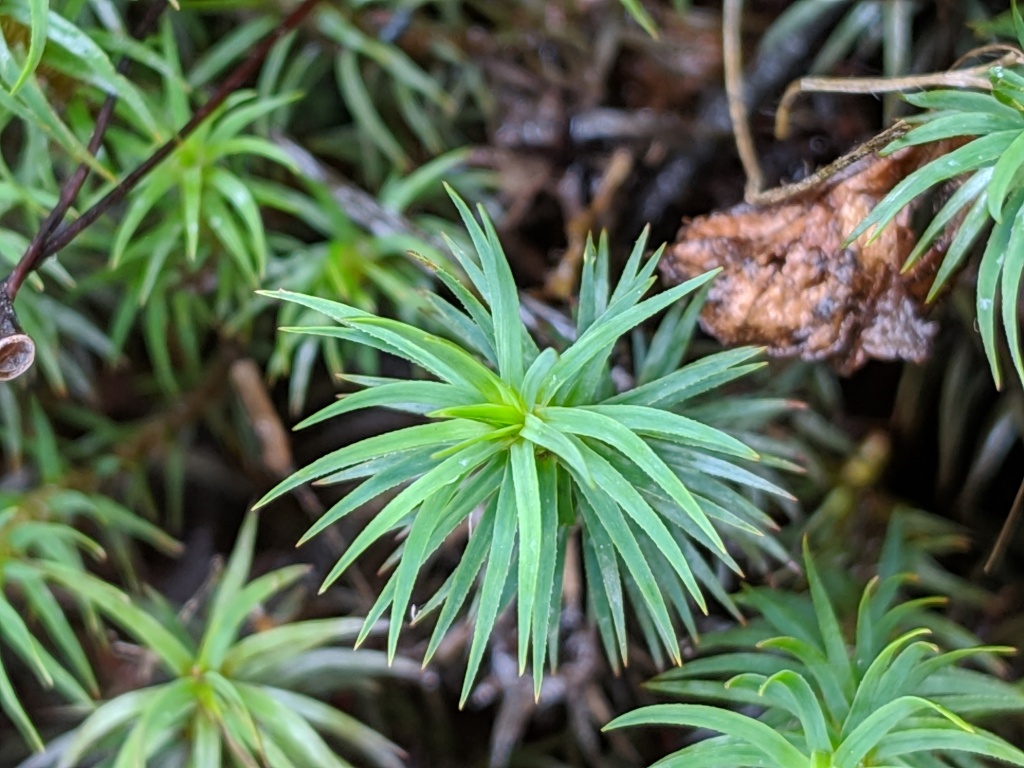Polytrichadelphus
Dioicous. Loose tufts. Aerial stems simple or rarely branched by innovation, without rhizoids. Leaves scale-like at base, becoming larger toward stem apex, linear-lanceolate, sometimes falcate, from a clearly sheathing base, wide-spreading to squarrose when moist, appressed when dry, with most of adaxial surface covered with lamellae; lamellae to 9 cells tall; apex acute or acuminate; costa percurrent or shortly excurrent; margin serrate or rarely entire (not in Victoria), plane or upcurved, unistratose; laminal cells ovate, subquadrate or rectangular, smooth. Capsules inclined or horizontal, obolid or ovoid, with two distinct angles and plane or concave above and convex below, with stomata. Calyptra cucullate, smooth and glabrous except for a tuft of bristles or spines at apex. Operculum rostrate. Peristome of 64 teeth, fused at their apices to epiphragm.
Around 10 species in Andean and southern South America, Tristan da Cunha, New Guinea and New Zealand; one species in Victoria.
 Spinning
Spinning
